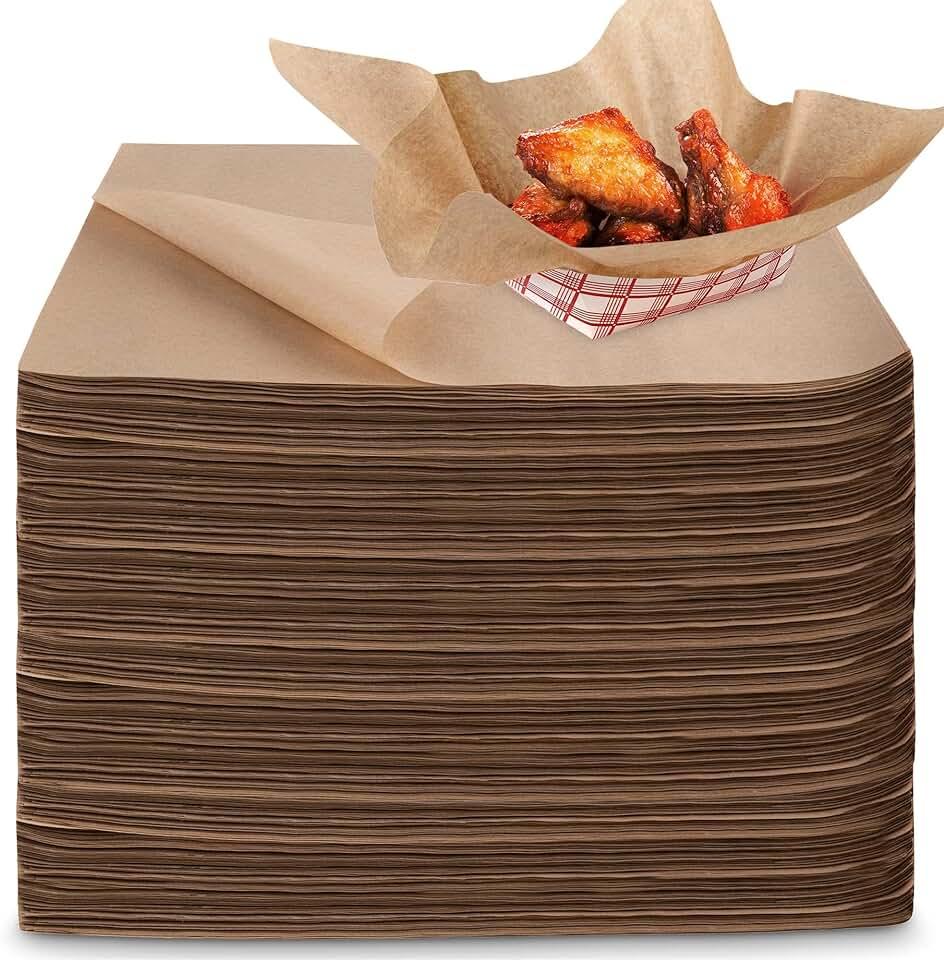Greaseproof paper, often overlooked in the culinary arsenal, is a versatile and indispensable tool for home cooks and professional chefs alike. Its ability to withstand high temperatures, repel grease, and provide a non-stick surface makes it an essential component in various cooking and baking applications. In this comprehensive guide, we will delve into the world of custom greaseproof paper, exploring its properties, uses, and the benefits it brings to your culinary endeavors.
Understanding Greaseproof Paper
Greaseproof paper is a type of paper that has been treated to resist the penetration of grease, oil, and moisture. This unique characteristic is achieved through a combination of chemical treatments and the use of specific fibers during the papermaking process. The result is a paper that remains intact even when exposed to high temperatures and fatty substances.
The Science Behind Greaseproof Paper
To understand how greaseproof paper works, it's essential to delve into its composition. The key to its grease-resistant properties lies in the paper's structure and the chemicals used in its treatment.
- Fiber Composition: Greaseproof paper is typically made from a blend of fibers, including wood pulp and other natural materials. These fibers are carefully selected for their strength and resistance to moisture.
- Chemical Treatment: The paper undergoes a chemical treatment process that introduces hydrophobic (water-repellent) substances into the fibers. This treatment creates a barrier that prevents grease and oil from penetrating the paper.
The Versatile Uses of Greaseproof Paper
Greaseproof paper's versatility extends far beyond its traditional role in baking. Here are some of its most common applications:
- Baking:
- Lining baking trays and tins to prevent sticking and facilitate easy cleanup.
- Wrapping pastries, bread, and cakes to maintain freshness.
- Creating edible paper for decorative purposes.
- Cooking:
- Grilling and barbecuing: Wrapping fish or meat to infuse flavor and prevent sticking.
- Steaming: Lining steaming baskets for delicate vegetables and seafood.
- Microwaving: Covering dishes to prevent splattering and retain moisture.
- Food Packaging:
- Wrapping sandwiches, burgers, and other takeaway foods.
- Lining food containers to prevent grease and oil from seeping through.
- Other Uses:
- Protecting surfaces from spills and stains.
- Crafting and art projects.
Benefits of Using Greaseproof Paper
Using greaseproof paper offers several advantages:
- Non-stick Surface: Prevents food from sticking to baking trays and pans, ensuring easy release and cleanup.
- Heat Resistance: Withstands high temperatures, making it suitable for various cooking methods.
- Grease and Oil Resistance: Protects food from absorbing excess grease, promoting healthier eating.
- Food Safety: Creates a hygienic barrier between food and surfaces.
- Convenience: Saves time and effort by eliminating the need for excessive greasing or buttering.
Choosing the Right Greaseproof Paper
Greaseproof paper comes in various thicknesses and sizes to suit different needs. Consider the following factors when selecting the right type:
- Thickness: Thicker paper is more durable and suitable for heavy-duty applications, while thinner paper is ideal for delicate tasks.
- Size: Choose the appropriate size based on your baking or cooking requirements.
- Brand Reputation: Opt for reputable brands that offer high-quality greaseproof paper.
Greaseproof Paper vs. Baking Paper
While often used interchangeably, greaseproof paper and baking paper are not the same. Baking paper is typically coated with silicone, making it even more non-stick than greaseproof paper. However, it is generally more expensive and may not be as suitable for high-temperature cooking.
Environmental Considerations
Greaseproof paper is generally considered eco-friendly as it is often made from recycled materials and is biodegradable. However, it's essential to check the specific product information to ensure it meets your sustainability standards.
Conclusion
Custom wax paper is an unsung hero in the kitchen, offering numerous benefits and versatility. Understanding its properties and various applications can elevate your cooking and baking game to new heights. Embrace the convenience, efficiency, and health benefits that greaseproof paper brings to your culinary endeavors.
